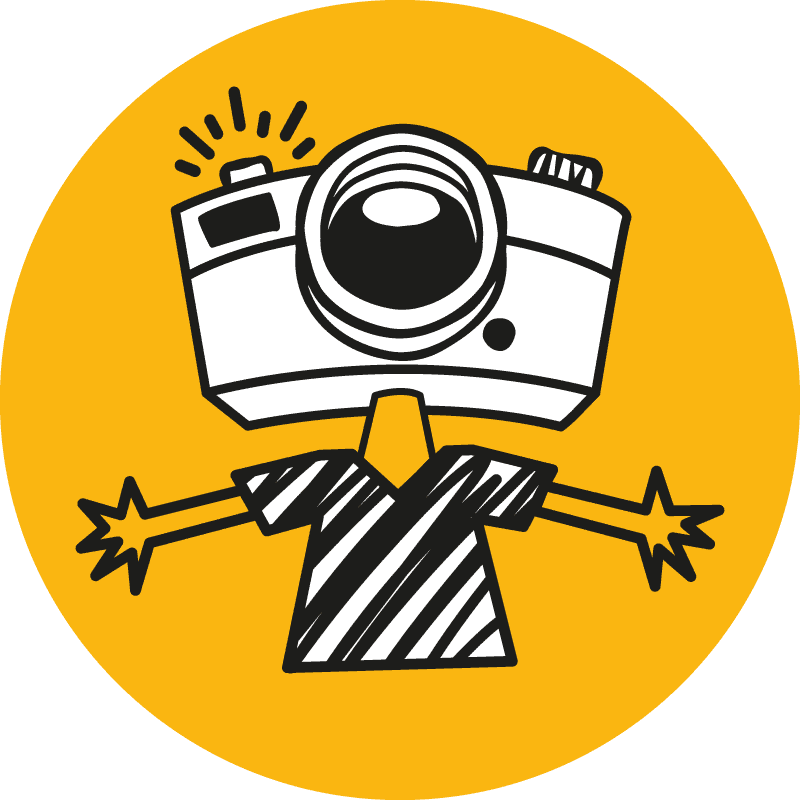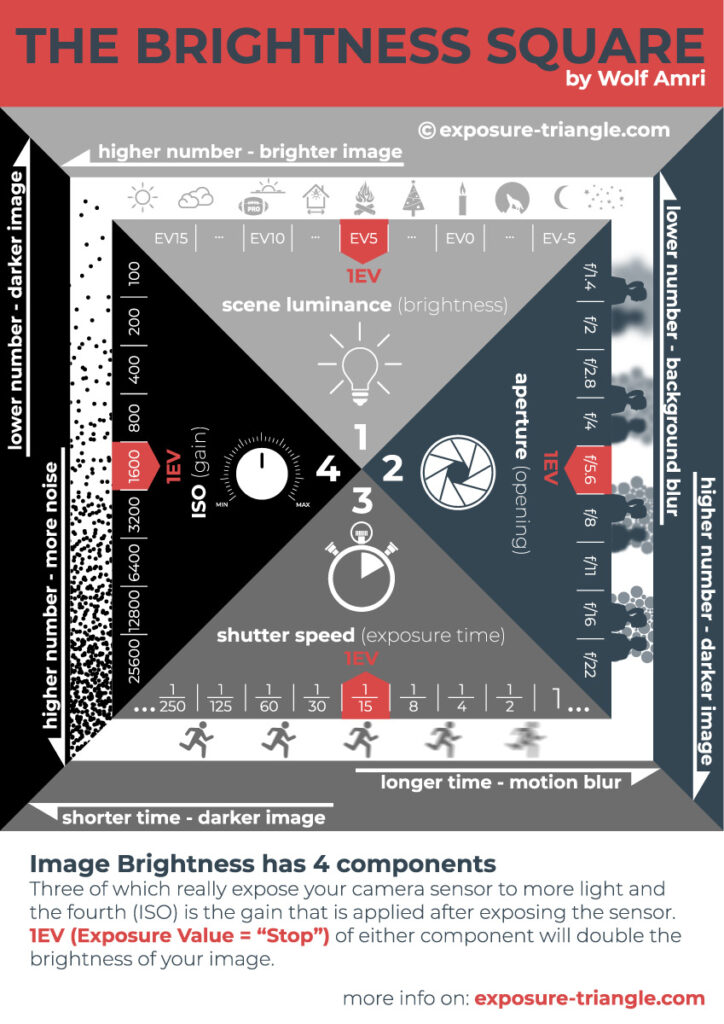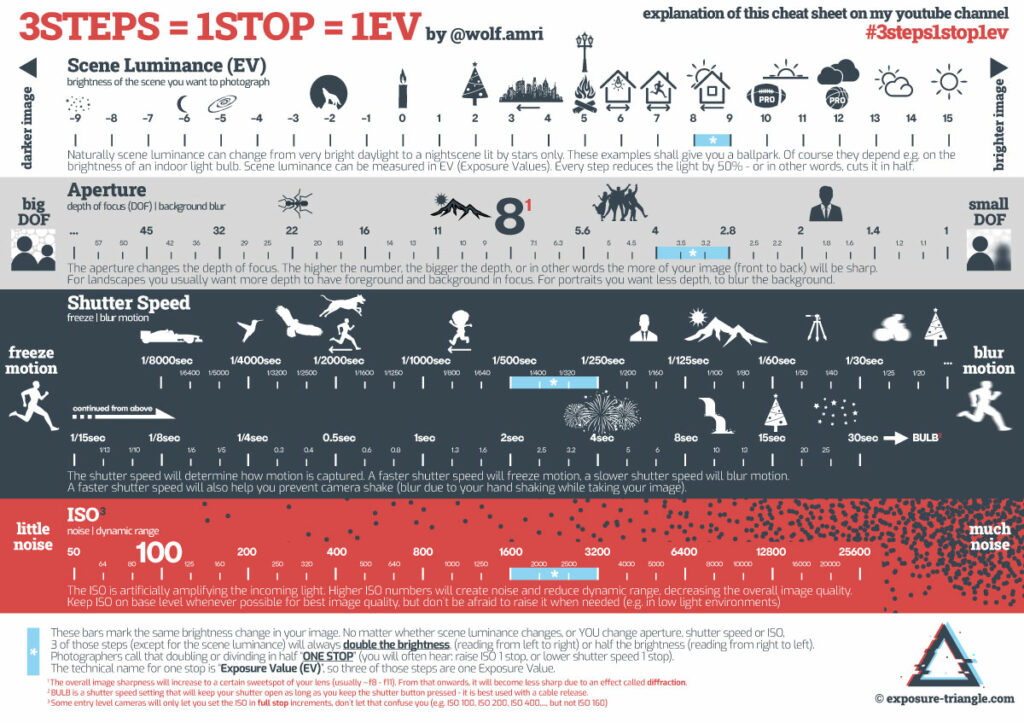Exposure Triangle Alternatives
Finding a Better Explanation Than the Exposure Triangle
The Exposure Triangle is Wrong
While being a very wide spread model to explain exposure, the exposure triangle is wrong in two ways and the reason why so many (particularly) beginners have issues understanding exposure and image brightness in general.
Why is the Exposure Triangle Wrong?
If you started on the home page, you know that exposure is about exposing the camera sensor to the light in the scene that you want to photograph.
So the components of exposure are:
(or scene brightness if you will)
The brighter the scene, the brighter the image will get.
The bigger the hole in the lens, the more light gets in and the brighter the image will get.
The longer the shutter is open to expose the sensor to the light, the brighter the image.
Animated Aperture on a real camera
Once the shutter is closed, the process of exposing the sensor (in short “exposure”) to the light has ended.
The data the sensor collected is then sent to the cameras processor and according to your ISO setting, the processor will then adds a certain amount of gain to the data before it stores it as an image. Even Wikipedia doesn’t list ISO in it’s Exposure in Photography Article.
Why Does That Matter?
is EXTREMELY confusing to beginners. "

That triangle does not list that single most important component of image brightness. And so beginners get the impression that photography is a magic mix of three camera settings that have to be met to get correct image brightness. Time to find Exposure Triangle Alternatives
The Wrong Exposure Triangle
The standard triangle lists ISO and is therefore wrong, despite being published everywhere.
The Correct Exposure Triangle
If you want to make it a triangle, it would have to include scene luminance and would look like this.
Better Models to Explain
Image Brightness
If the traditional exposure triangle is wrong, what are exposure triangle alternatives?
1. Don't Talk About Exposure When You Actually Mean Image Brightness
No doubt, ISO is a very important part of image brightness, but it is still the gain that is added after exposure. So when you talk about image brightness, why call it exposure?
2. The Brightness Square
Understanding that scene brightness, aperture, shutter speed and ISO are 4 components that all have the same influence on image brightness. Why not use a brightness square as an exposure triangle alternative?
I have created an image brightness square for you that shows all the effects that each components has and their relation to each other.
- It includes Scene Luminance
- It shows the importance of exposure values (EV)
- It ads more information than regular exposure triangle graphics
If you register for free on this website, you get access to our download section can download the brightness bars as a printable pdf.
or
3. Brightness Bars
Another exposure triangle alternative that would be easier to help people understand photography would be a model that I created. I call it Exposure Bars. It is supposed to explain the relation of the four components and emphasises on the fact that the camera settings are interchangeable as you have learned on my page about exposure values
If you register for free on this website, you get access to our download section can download the brightness bars as a printable pdf.
or
SPREAD THE WORD
There are not many exposure triangle alternatives around, so it’s about time to spread the word and make photography easier to understand. Share this website
Exposure Triangle Alternatives FAQ
Yes you can. I have created a members area with lots of useful downloads. One of which being the Brigthness Bar and the Brightness Square.
All you have to do is create a free account to get access.
You are welcome to share the brightness bars as a jpg or png up to 1500px width. But please don’t publish a the downloadable PDF. I have put a lot of work into this concept and you would steal my work if you just took it. It is subject to my copyright.
Please get in contact with me should you have any further questions regarding the Brightness Bars.
That depends on how much you want to think while using it.
The brightness square shows everything at a glance, while the brightness bars are more in-depth.
I’d recommend using the brightness square out on location and the exposure bars when you have more time to learn.
But at best you try both and see which one of the exposure triangle alternatives works better for you.
Back in the film days, ISO had a much more important role in photography because a higher ISO really made film more sensitive to light. But even then ISO was technically not a part of exposure. And even then using a brightness square would have been a much better exposure triangle alternative.
However as with many things in photography (like shutter speed that would be better called exposure time), it doesn’t need to be correct to be wide spread.
Please comment below. I will constantly update this section with new questions.




Excellent, but I have one small quibble. It is implied that we are stuck with ‘available’ light when in fact we can alter that with neutral density filters and flashes, etc.
Thank you, Phillip. You are, of course, absolutely right. But these cheat sheets were meant as an alternative to the exposure triangle, which doesn’t include these either.
I have added some info on ND filters a while ago and will add some info on flash in a few months time. I’m currently working on new videos and one will be a flash photography course.
Either way, thanks again for your valuable feedback! I will try to come up with something that will incorporate ND filters and flash.
Thank you Wolf Amri for a the best classes on YouTube.
I enjoy them ..
What I like I can go back and look at them over and over to learn.
Thank you
Yensina
Hi Yensina, great to see you here! Thank you for the nice feedback.
Believe it or not, a new one is coming very very soon – much better, much more fun and even faster learning.